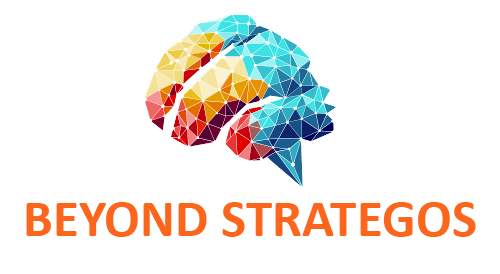The Era of Transient Competitive Advantage: Lessons from Companies Across EMEA
How Beyond Strategos Can Help
At Beyond Strategos, we specialize in helping organizations across EMEA navigate the complexities of transient competitive advantage. Whether it’s identifying new revenue streams, optimizing operational models, or embracing technology, our tailor-made strategies ensure that your business remains agile, innovative, and ahead of the curve.
Our bespoke approach, supported by an in-depth understanding of regional dynamics, equips clients with the tools and insights needed to thrive in a constantly shifting landscape.
In the rapidly evolving global business landscape, the idea of achieving and maintaining a sustainable competitive advantage has become elusive. Instead, businesses increasingly operate in a state of transient competitive advantage—a reality where success hinges on continuous innovation, agility, and adaptability. This paradigm shift is especially evident in the diverse economic environments of Europe, the Middle East, and Africa (EMEA), where companies must navigate a combination of advanced markets, emerging economies, and unique regional challenges.
This article explores how businesses across EMEA have embraced the concept of transient competitive advantage, providing examples of strategies, innovations, and pivots that led to measurable success.
Europe: Leveraging Technology to Stay Ahead
1. The Case of Norrgen Solar (Sweden)
Norrgen Solar, a mid-sized renewable energy firm in Sweden, found itself at a crossroads in 2018. The surge of global competitors in the solar panel industry, combined with tightening margins, forced the company to rethink its strategy.
Pivot: Instead of competing solely on manufacturing efficiency, Norrgen shifted to offering energy-as-a-service (EaaS), targeting rural municipalities and private companies with flexible, subscription-based solar solutions.
Outcome: By 2023, Norrgen reported a 35% annual growth rate, with over 50,000 energy subscriptions across Europe. This pivot allowed them to thrive in a space where customer relationships and service innovation, rather than hardware, drove competitive advantage.
2. Carrefour (France)
The retail industry has been among the hardest hit by technological disruption and shifting consumer preferences. Carrefour, one of Europe’s largest retail chains, realized that traditional hypermarkets were losing appeal.
Innovation: In 2020, Carrefour launched its Flash 10/10 stores, which rely entirely on AI-driven, cashierless technology, allowing customers to shop and pay in under 10 minutes.
Impact: Carrefour’s sales from these stores rose by 15% in urban centers, outperforming traditional locations. The company continues to iterate on this model, adapting to urban consumer needs while maintaining its edge in convenience.
Middle East: Capitalizing on Regional Dynamics
1. Careem (UAE)
Careem, the ride-hailing service headquartered in Dubai, disrupted traditional transportation models in the Middle East. However, the introduction of global giants like Uber created immense competitive pressure.
Strategy: Careem shifted from being a ride-hailing service to a "super app", integrating food delivery, bike rentals, and financial services. They leveraged regional knowledge to cater specifically to Middle Eastern consumers, including cash payment options and women-specific transportation services.
Result: By 2023, Careem’s revenues grew by 28% year-on-year, and the company expanded into 18 countries, showcasing the power of regional adaptation and service diversification in creating transient competitive advantage.
2. Saudi Aramco and Renewable Energy
Saudi Aramco, traditionally known for its dominance in oil production, began to recognize the volatility of its core business in the face of global decarbonization efforts.
Transformation: In 2021, the company launched the Renewable Energy Ventures Division, focusing on wind and solar projects in emerging markets across Africa. Aramco positioned itself as a dual-energy leader, providing oil for transitioning economies while developing renewable projects for the future.
Outcome: By 2024, renewable energy accounted for 10% of Aramco’s portfolio, positioning it as a global energy leader rather than a traditional oil giant.
Africa: Adapting to Local Challenges
1. M-Pesa (Kenya)
M-Pesa, a mobile money platform launched by Safaricom, has been a game-changer in financial inclusion across Africa. However, by 2018, competition from fintech startups threatened its dominance.
Adaptation: M-Pesa pivoted from basic money transfers to becoming a platform for micro-loans and savings, catering to unbanked populations.
Impact: Today, M-Pesa processes over 40 million transactions daily and serves 52% of Kenya’s GDP through its services. Its ability to constantly innovate ensures it remains an essential part of African economies.
2. Jumia (Nigeria)
Jumia, Africa’s leading e-commerce platform, struggled to compete against global giants like Amazon and Alibaba. Unlike its competitors, Jumia faced unique challenges such as inadequate logistics infrastructure and low internet penetration in rural areas.
Innovation: Jumia created a last-mile delivery ecosystem, leveraging local vendors and individual couriers to reach rural customers. It also launched JumiaPay, a digital payment platform tailored for African markets.
Result: Jumia’s gross merchandise volume grew by 32% in 2022, with 70% of its orders coming from previously underserved rural areas.
Key Themes Driving Transient Competitive Advantage in EMEA
From the examples above, several common themes emerge, highlighting what it takes to succeed in today’s era of transient competitive advantage:
1.Agility in Strategy: Companies like Norrgen Solar and Careem have demonstrated the importance of quickly pivoting to meet new demands.
2.Localized Innovation: M-Pesa and Jumia highlight the power of tailoring solutions to regional challenges.
3.Technology as an Enabler: Carrefour and Norrgen Solar leveraged technology not just to stay competitive but to redefine their industries.
4.Sustainability Focus: Aramco’s shift toward renewable energy and Norrgen’s solar solutions reflect the growing importance of sustainability in competitive positioning.
5.Customer-Centric Models: Across all examples, companies that centered their strategies on customer needs—whether through new services, pricing models, or accessibility—maintained their competitive edge.
